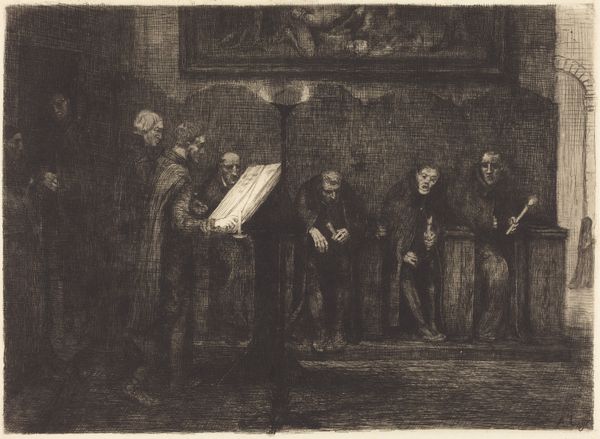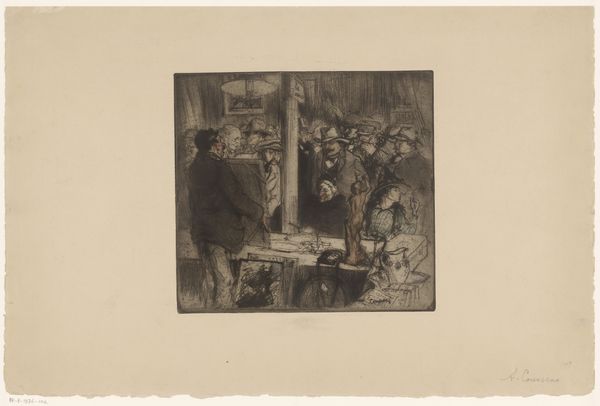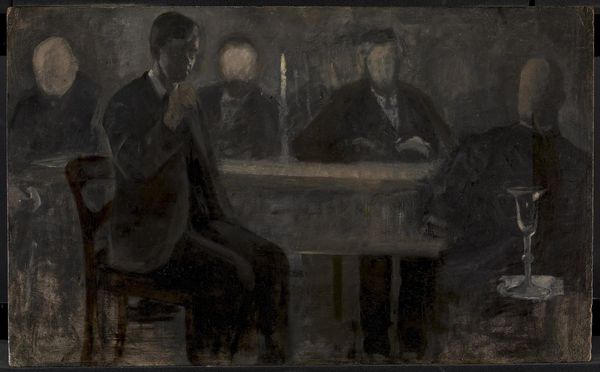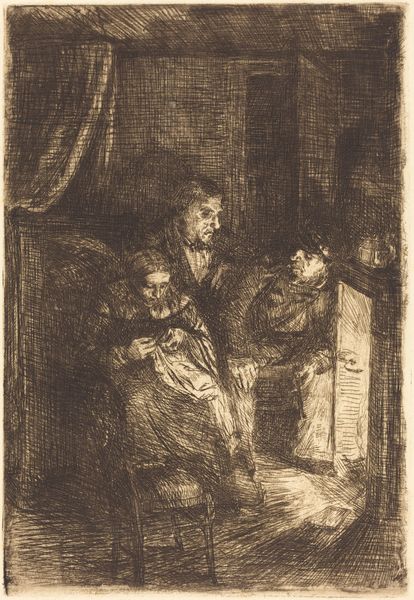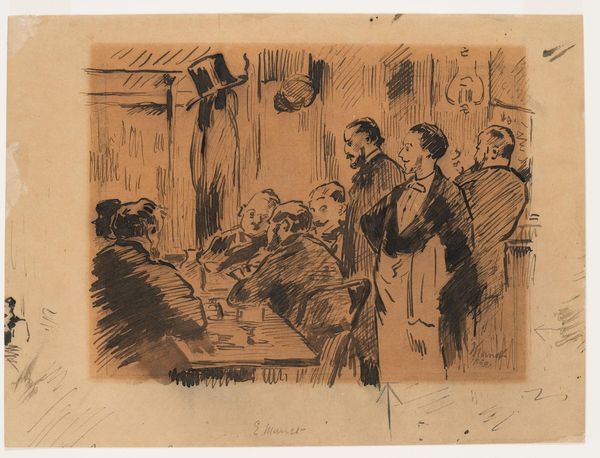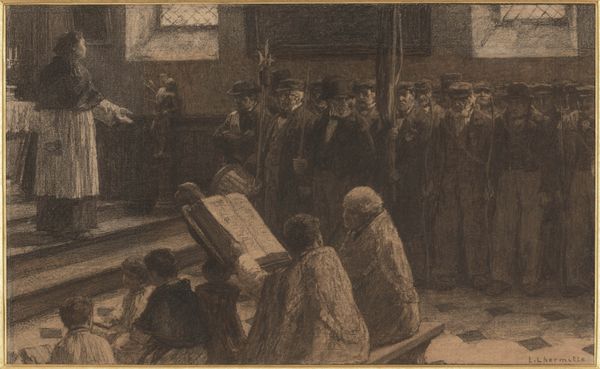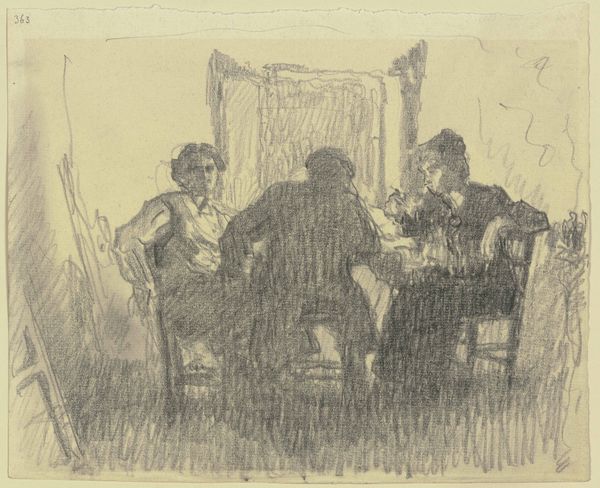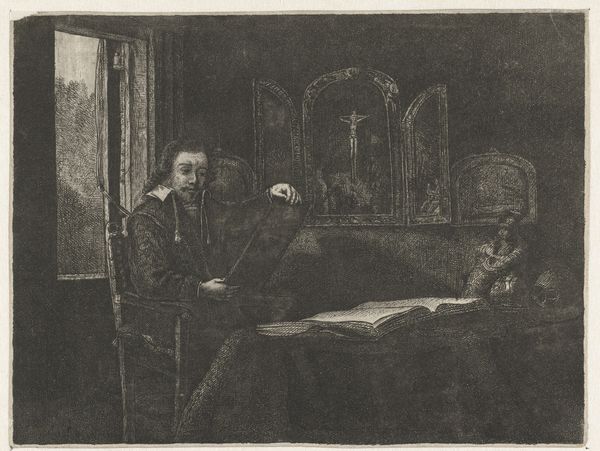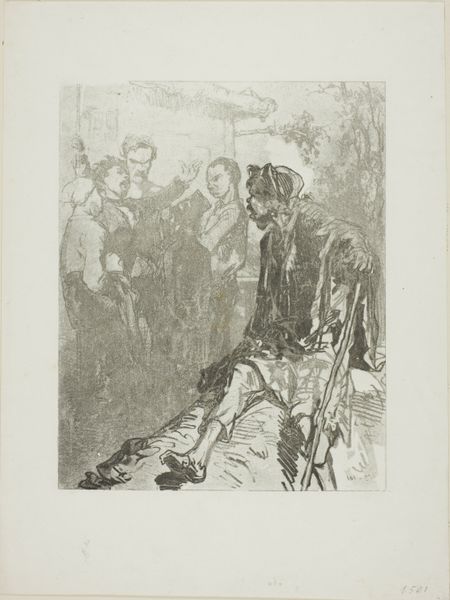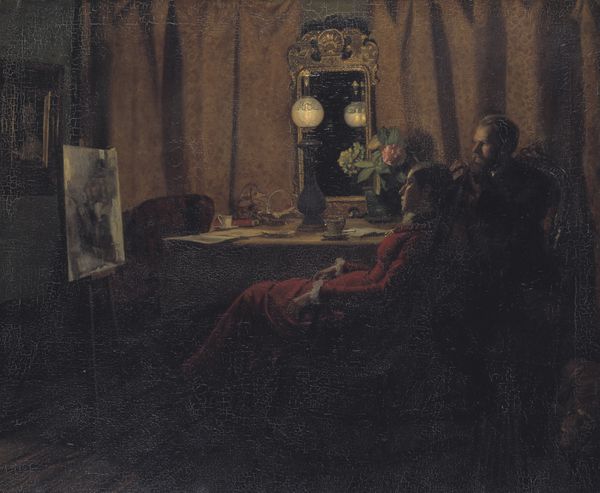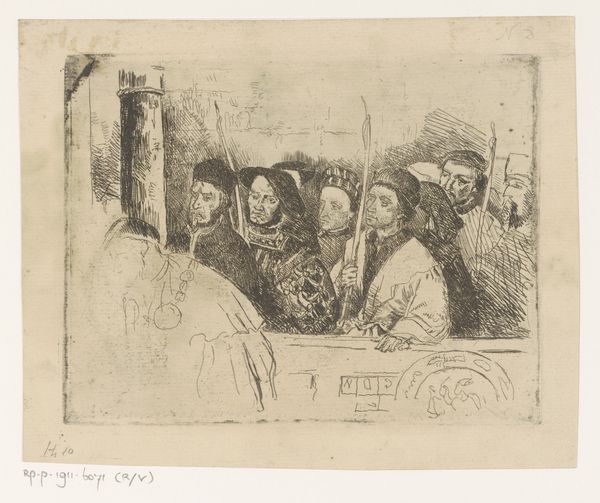
drawing, print, graphite, charcoal
#
portrait
#
drawing
# print
#
impressionism
#
charcoal drawing
#
group-portraits
#
graphite
#
genre-painting
#
charcoal
Dimensions: 11 1/2 x 15 1/2 in. (29.2 x 39.4cm)
Copyright: Public Domain
Editor: This is Henri Fantin-Latour's "Manet's Studio in the Batignolles," created sometime between 1865 and 1875. It looks like a drawing, possibly charcoal or graphite on paper. The figures are grouped closely together, it creates an intimate mood. What catches your eye in this piece? Curator: As a materialist, I immediately consider the socio-economic implications of Fantin-Latour depicting Manet's circle. Charcoal was an inexpensive medium, readily available. Its use here, compared to painting, suggests an engagement with a certain type of artistic labor and a specific consumer market. How does this medium choice reflect on the perceived value of artistic representation at that time? Editor: That's interesting, I hadn't thought about charcoal being a deliberate choice loaded with meaning! I was focusing on the composition, the arrangement of bodies, how it looks so deliberately casual but, knowing the art world, was likely staged. Curator: Exactly! Consider the means of production. Was this commissioned or a self-initiated project? What type of paper was used? Was it mass-produced or handmade? These details illuminate Fantin-Latour’s position relative to the art market and the evolving status of the artist within a rapidly changing society. What do you make of the fact that the figures are primarily men? Editor: Well, it probably reflects the limited access women had to the art world back then. But you're right, analyzing the material conditions surrounding its creation is a whole new lens. Curator: Indeed! By examining the materials, the labor involved, and the social context of production, we can unravel the complex relationships between art, artist, and society. It reminds us that even a seemingly simple drawing can offer profound insights into the material conditions of its time. Editor: I see the artwork with new eyes. Now I understand the value of looking beyond just the subject and the composition. Thanks for sharing your insight!
Comments
No comments
Be the first to comment and join the conversation on the ultimate creative platform.
